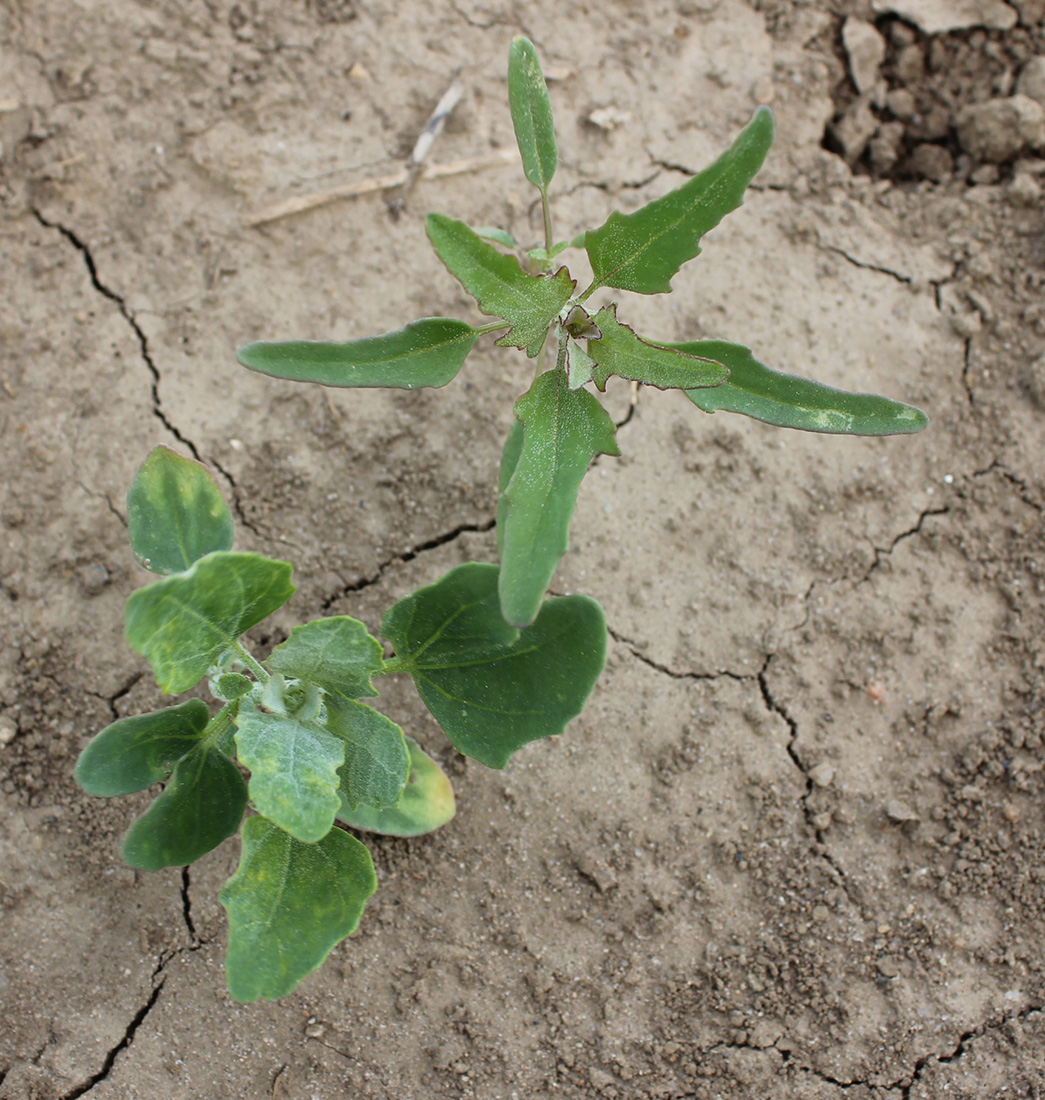Figleaved Goosefoot
- Goosefoot (Chenopodiaceae family):
- Chenopodium ficifollium Sm.
- EPPO code:
- CHEFI
- Other names:
- Fig-leaved goosefoot, chénopode à feuilles de figuier
Species information
- Lifecycle:
- Annual.
- Propagation:
- Reproduces by seed.
- Emergence:
- Emerges early in the spring with a similar emergence pattern to lamb’s- quarters.
- Habitat:
- Similar to lamb’s-quarters, mainly found in cultivated fields or any landscape where soil disturbance is frequent. It is not as prevelant as lamb's-quarters.
- Competitiveness:
- No published data exists on crop yield losses but presumably similar to the very competitive lamb’s-quarters.
- Resistance:
- No documented cases of herbicide resistant populations in Ontario.
Identification clues
Leaves
- Cotyledons:
- Linear, similar to lamb's-quarters.
- Young leaves:
- Lanceolate, often with two very small lobes at the base, and lightly coated with white, mealy powder.
- Mature leaves:
- Hastate, with irregular toothed margins, two prominent basal lobes and lightly covered in white mealy powder.
Mature plant
- Stem:
- The first 2–4 leaves have an opposite orientation (2 per node) on the stem, subsequent leaves are oriented in an alternate orientation (1 per node).
- Flowers and seed heads:
- Clusters of green, round and irregularly shaped flowers, very compact inflorescence much like that of lamb's-quarters.
- Roots:
- Taproot.
Often mistaken for
I know it's not Lamb’s-quarters because lamb’s-quarters has much broader, triangular leaves that are darker green.
I know it's not Spreading atriplex because spreading atriplex leaves look very similar as they too have the prominent basal lobes. However, the leaf shape above those basal lobes is triangular with a sharp point. With fig-leaved goosefoot, the leaf shape above the basal lobes is more rectangular with a rounded apex.
I know it's not Oak-leaved goosefoot because as the name implies, it has “oak-leaf” shaped leaves, fleshy with prominent white veins. It typically has deep red stems and more of a creeping habit than the upright habit of figleaved goosefoot.





Updated: January 13, 2023
Published: January 13, 2023